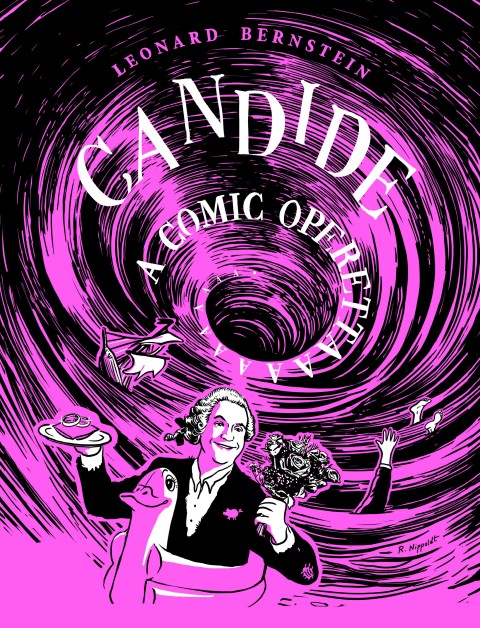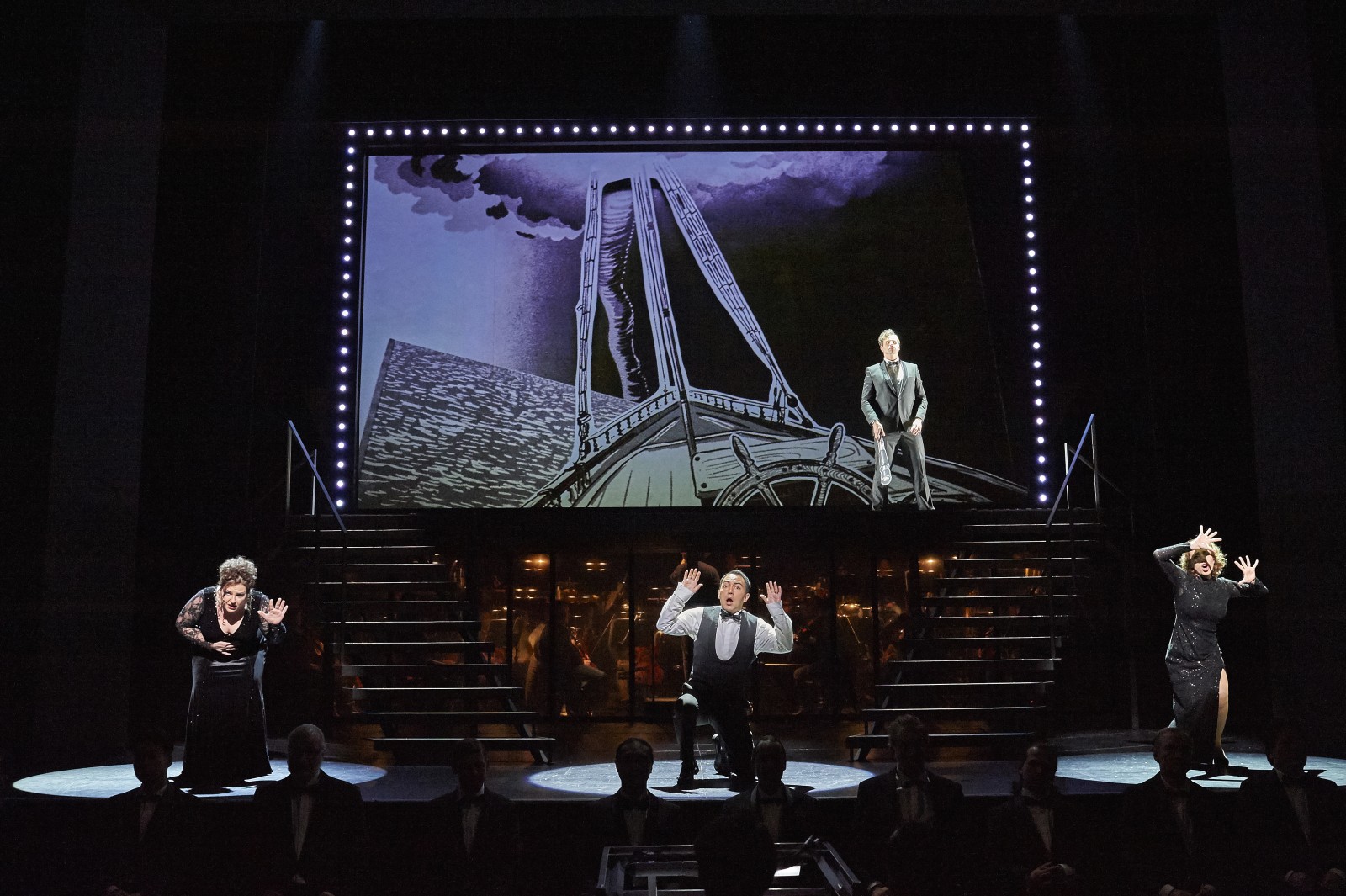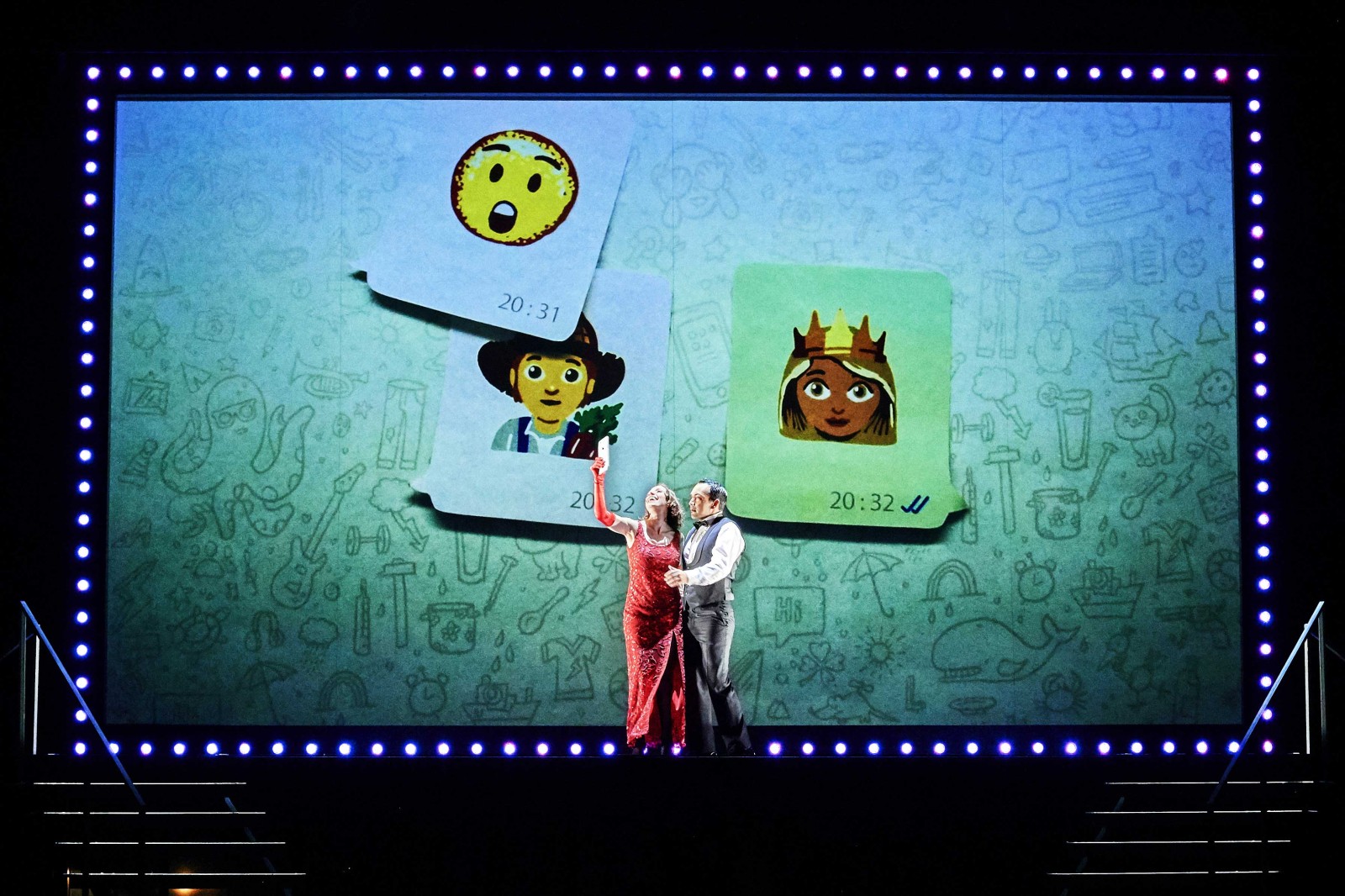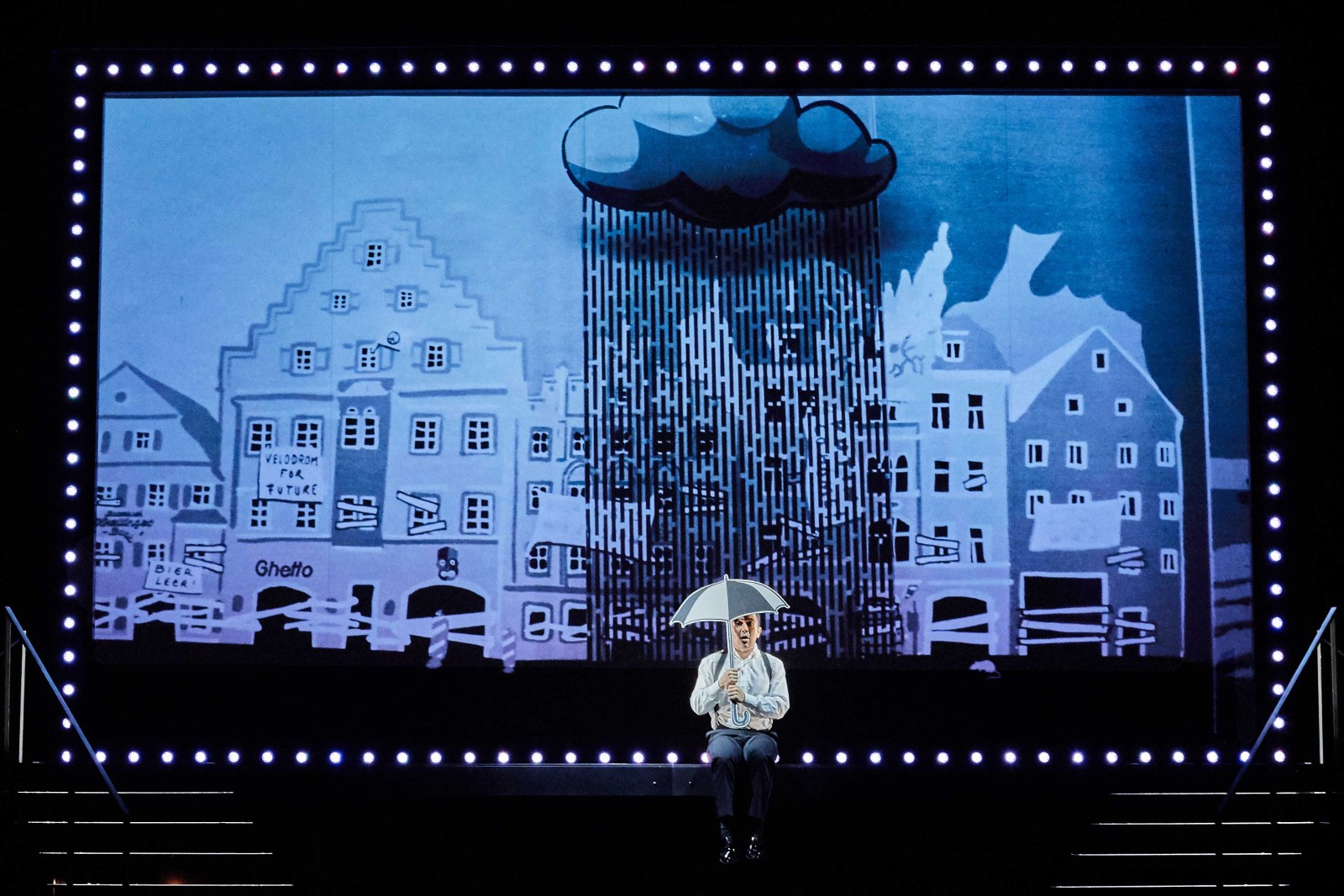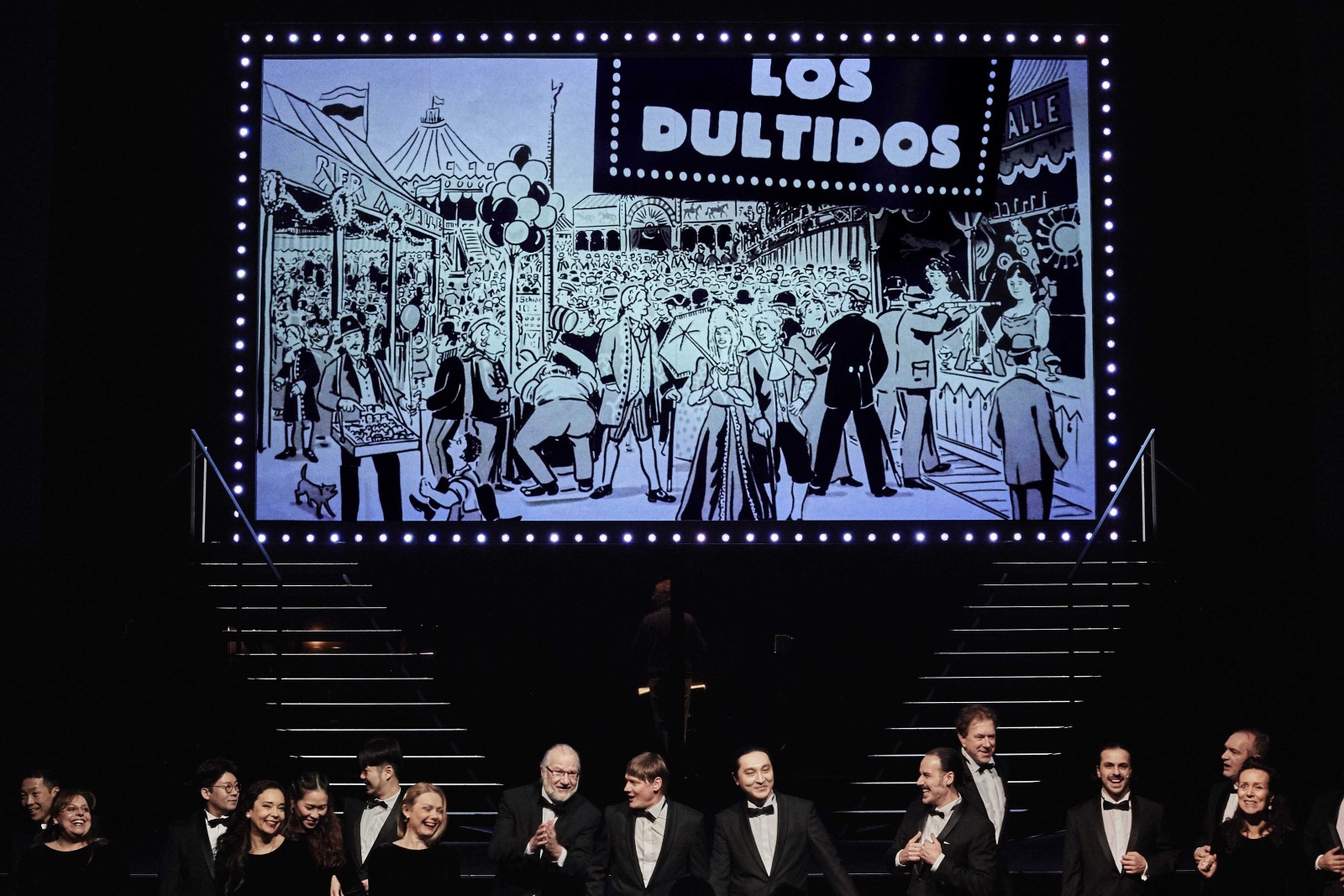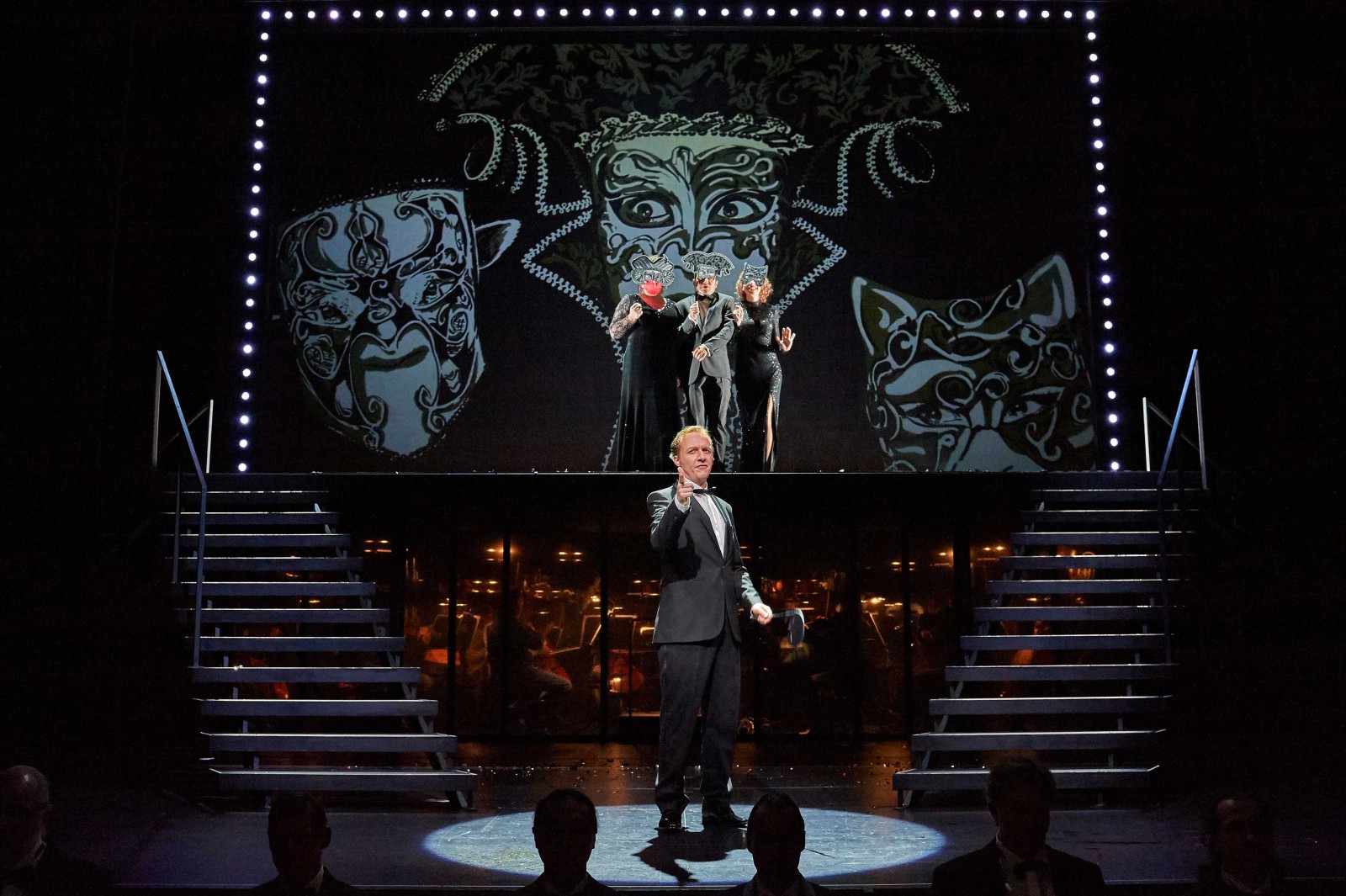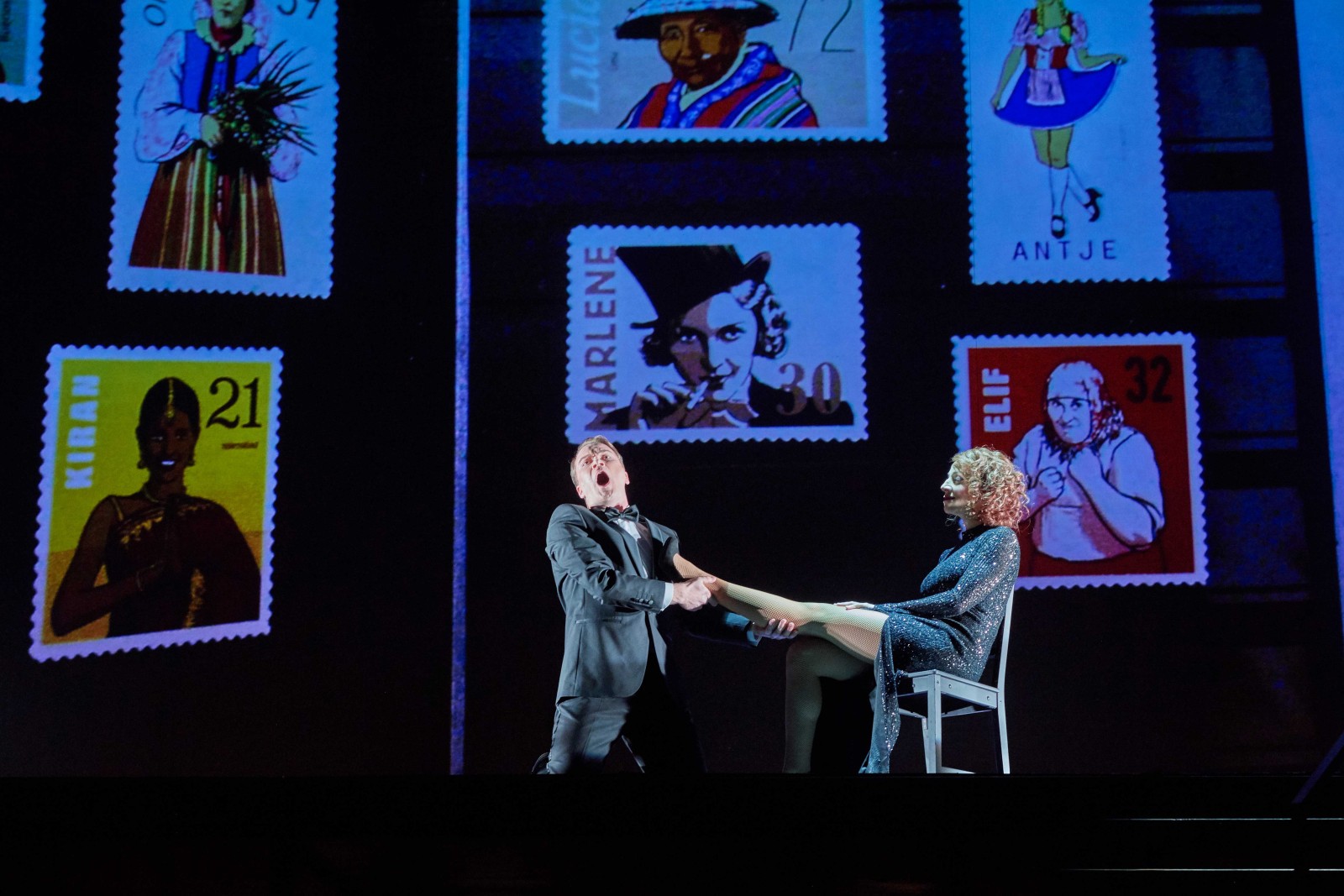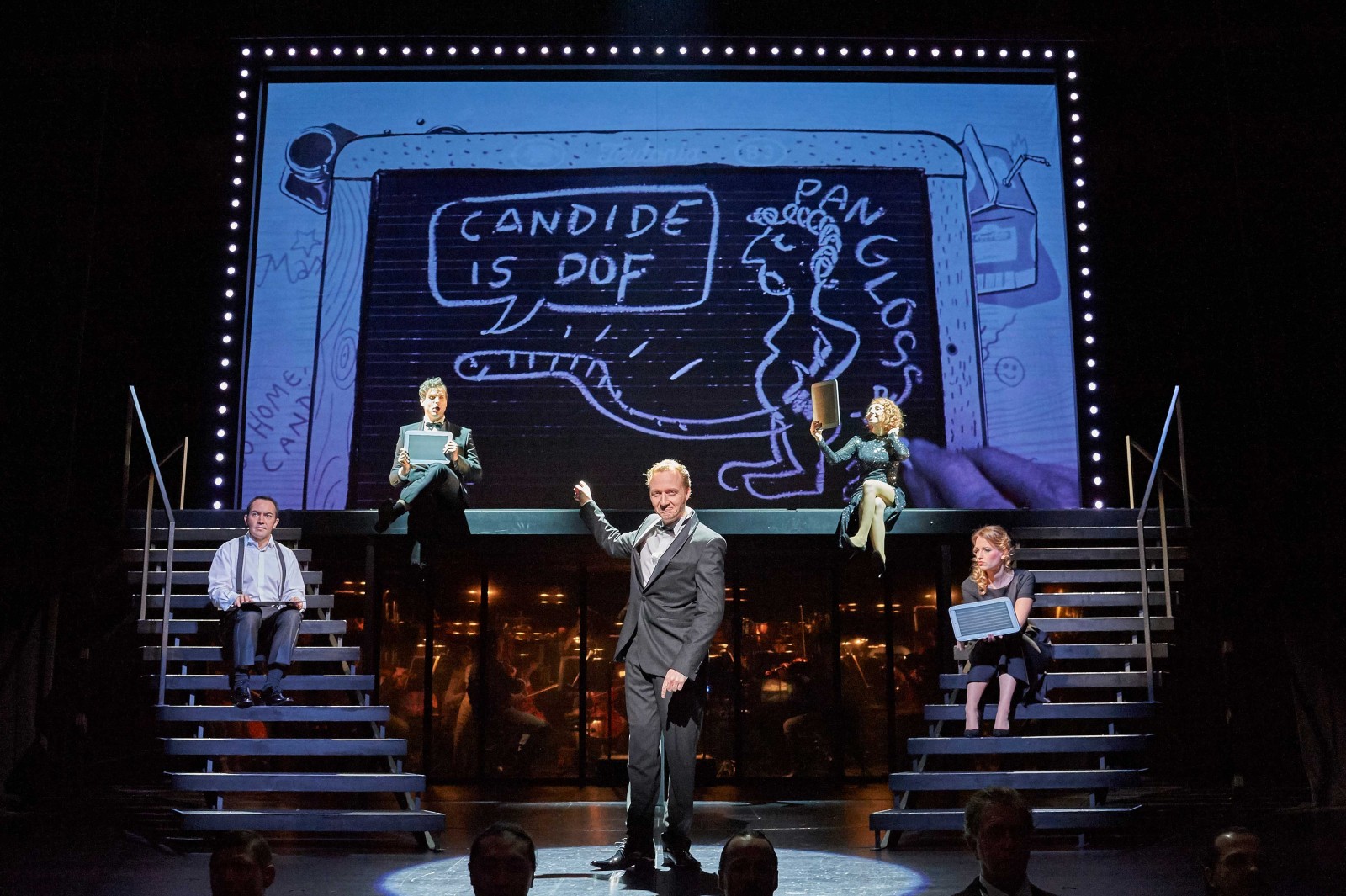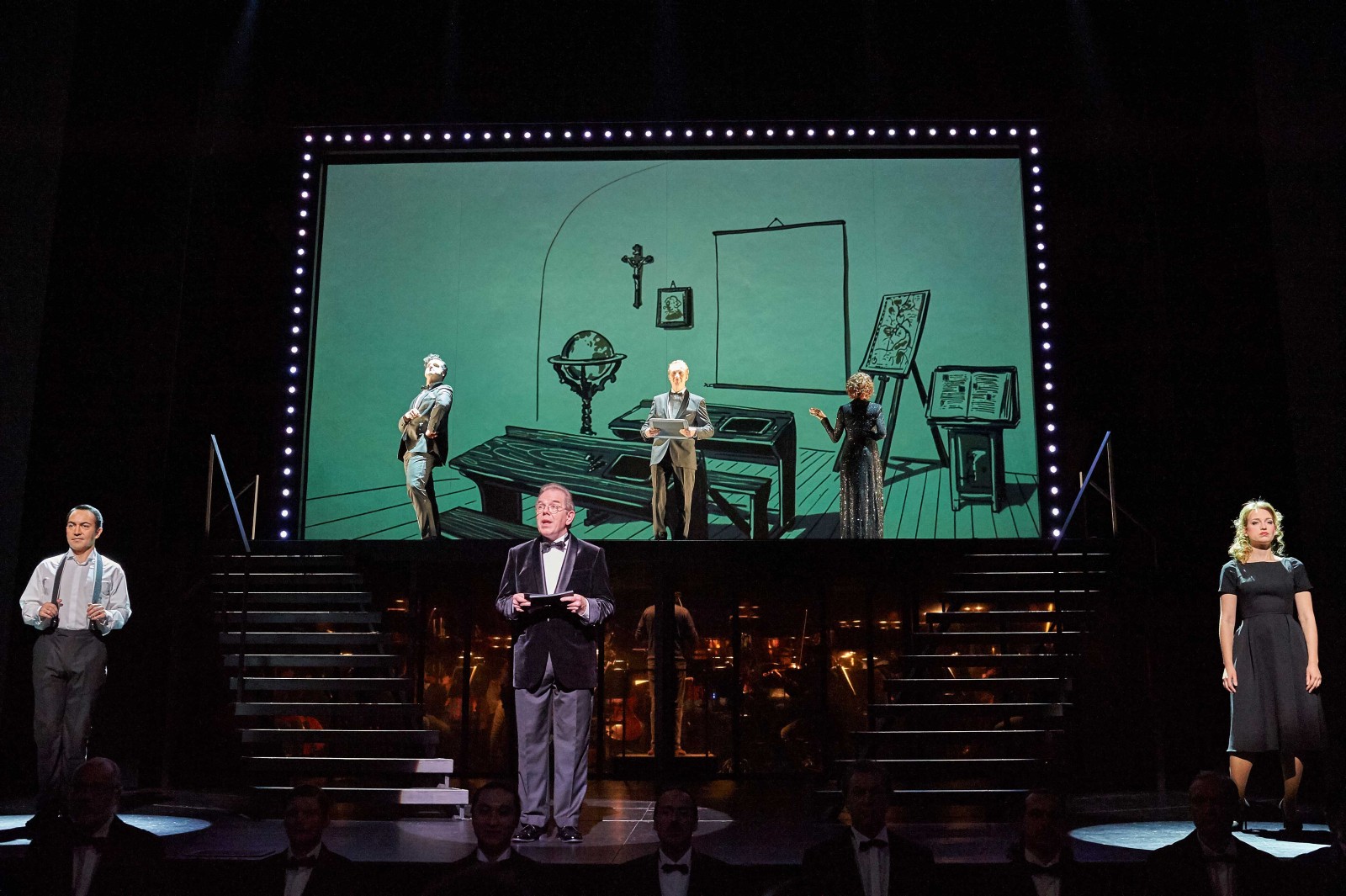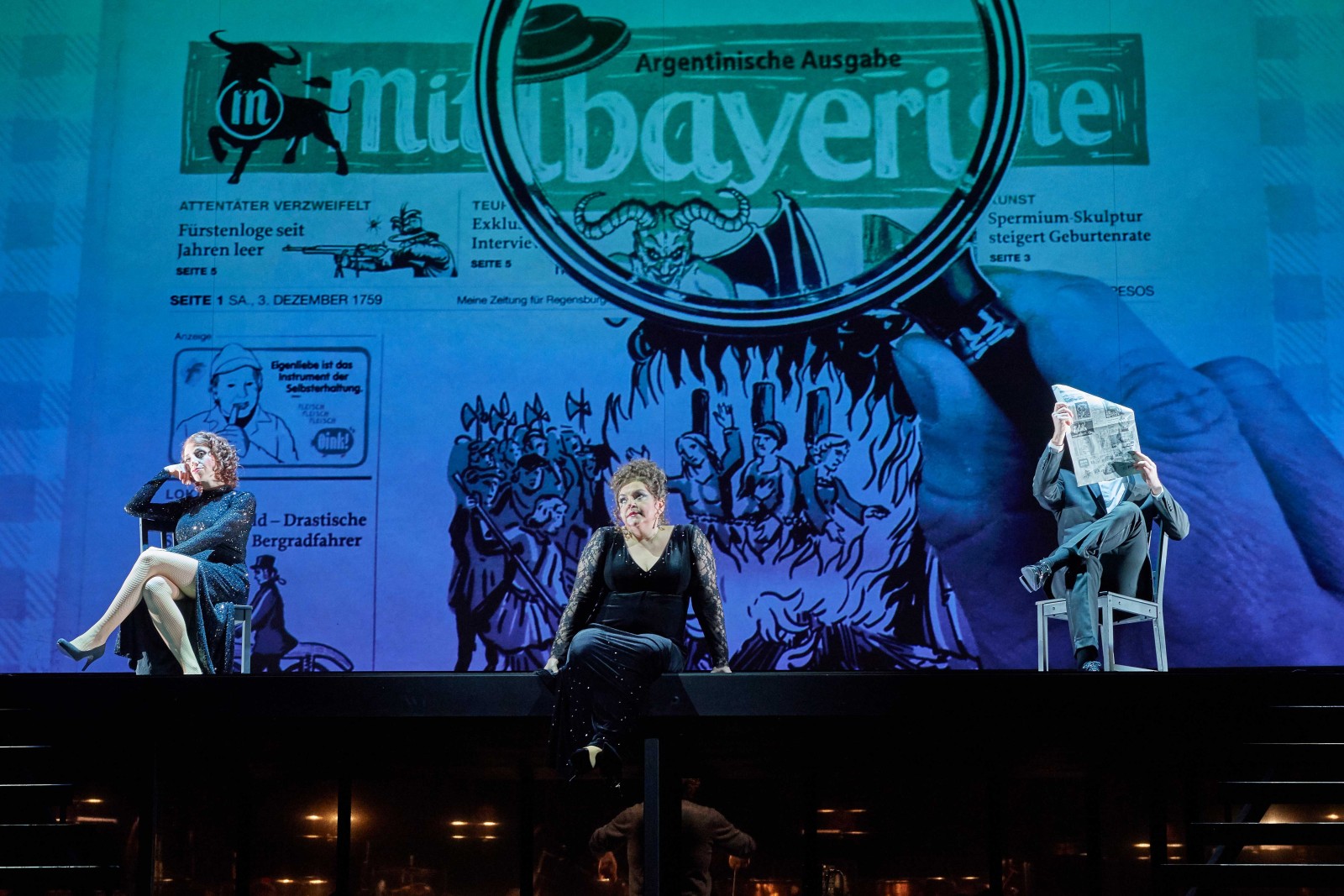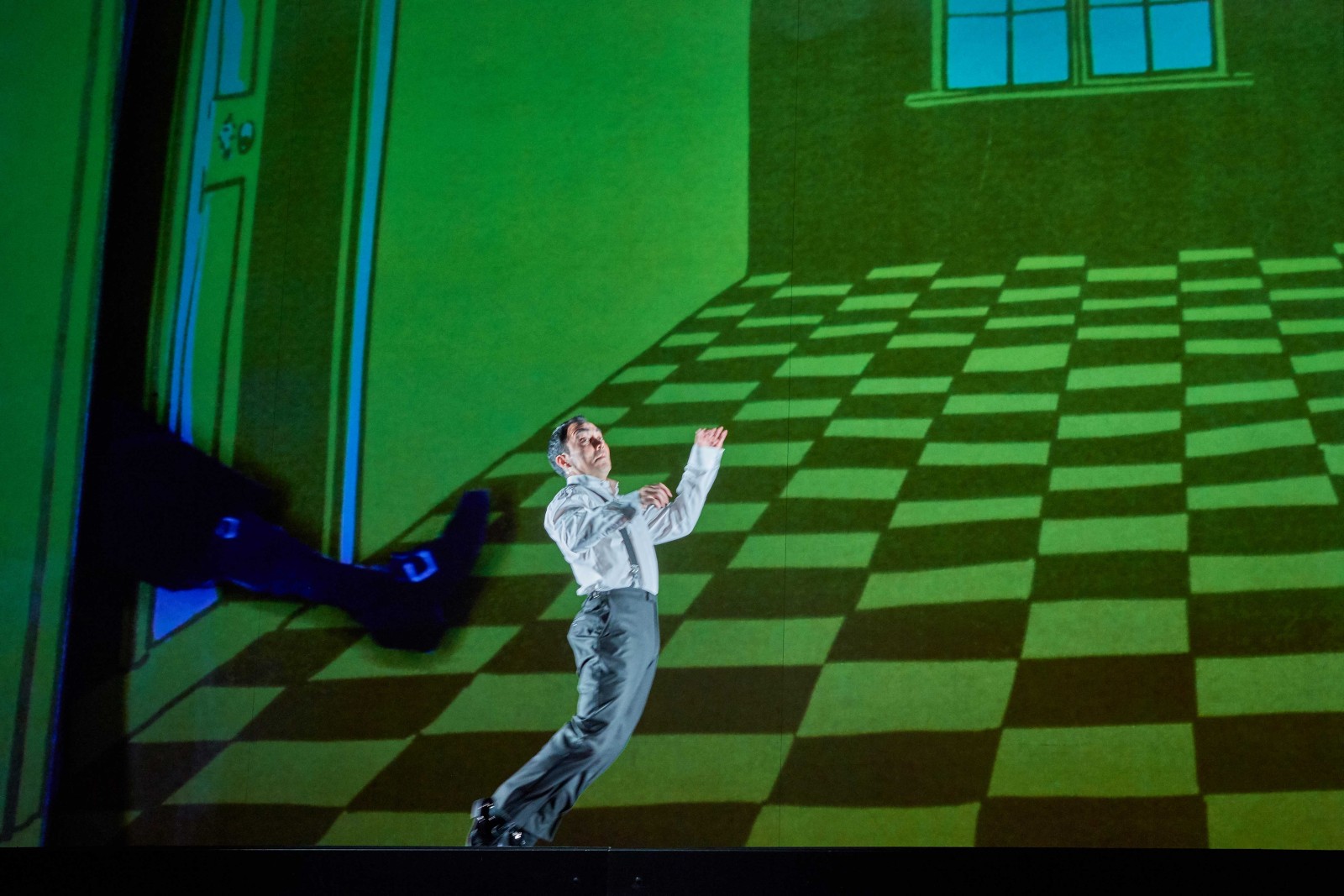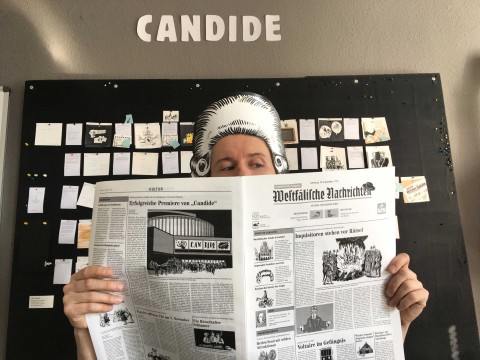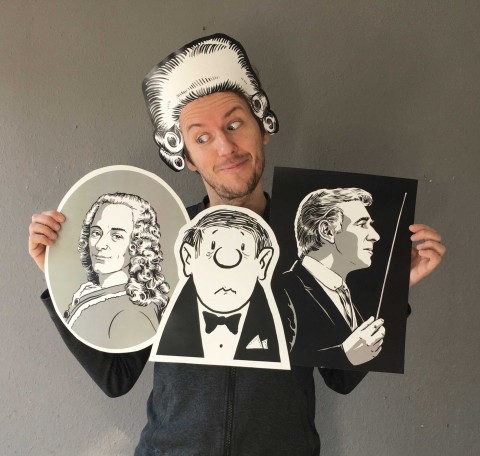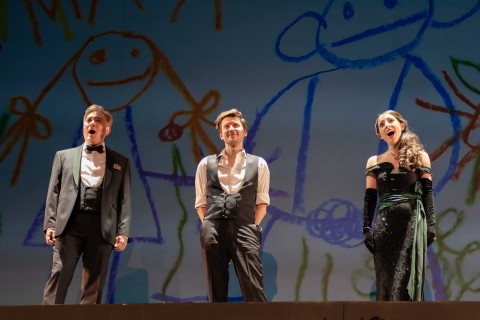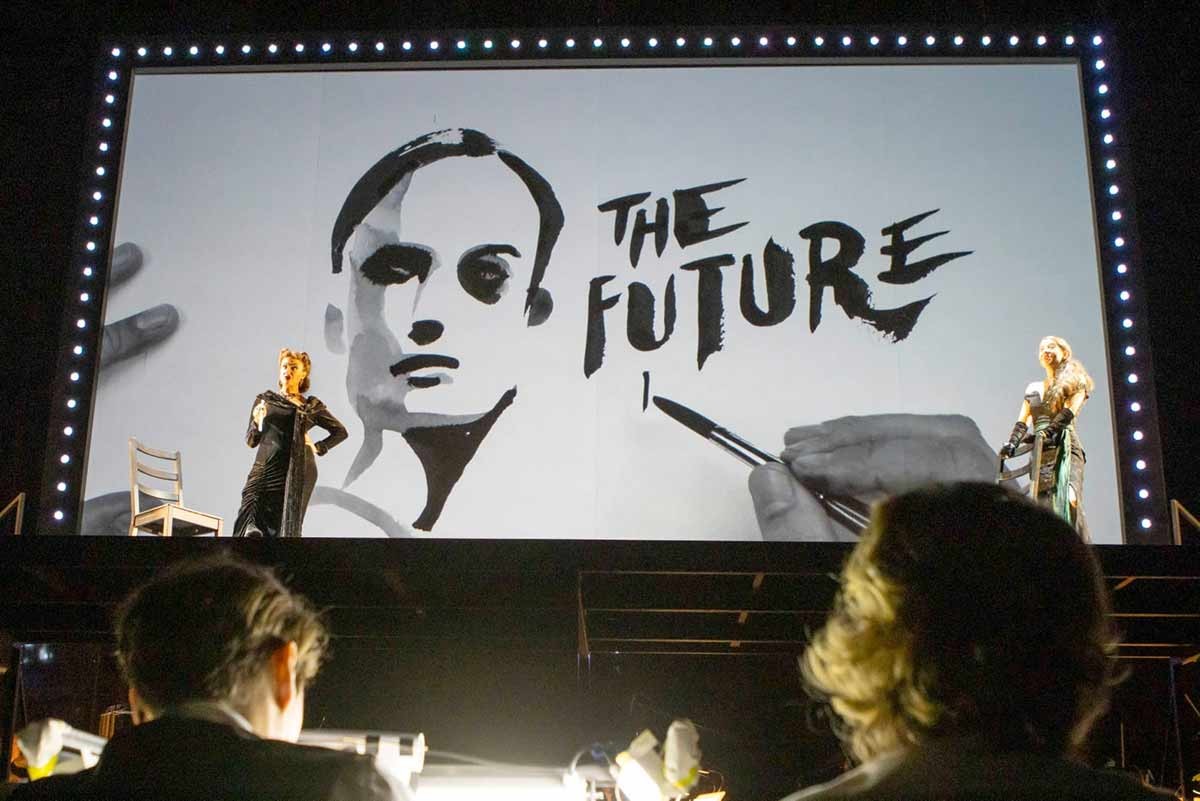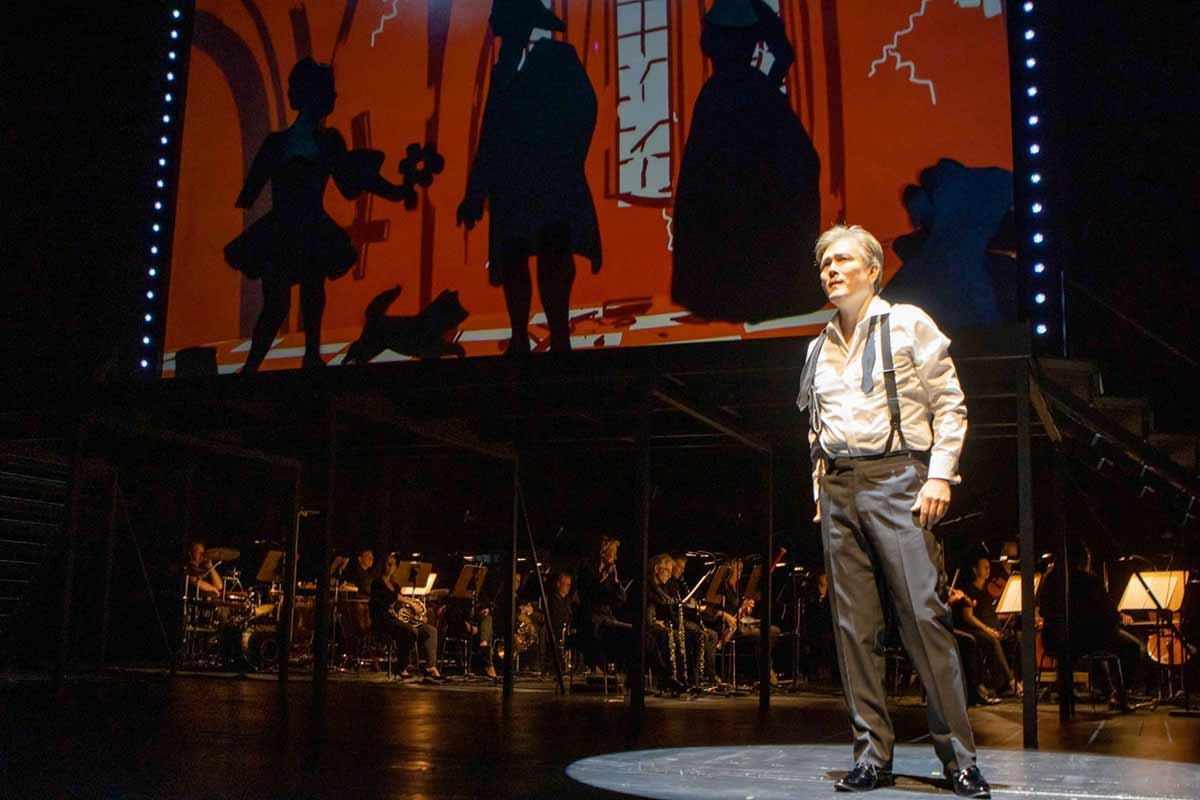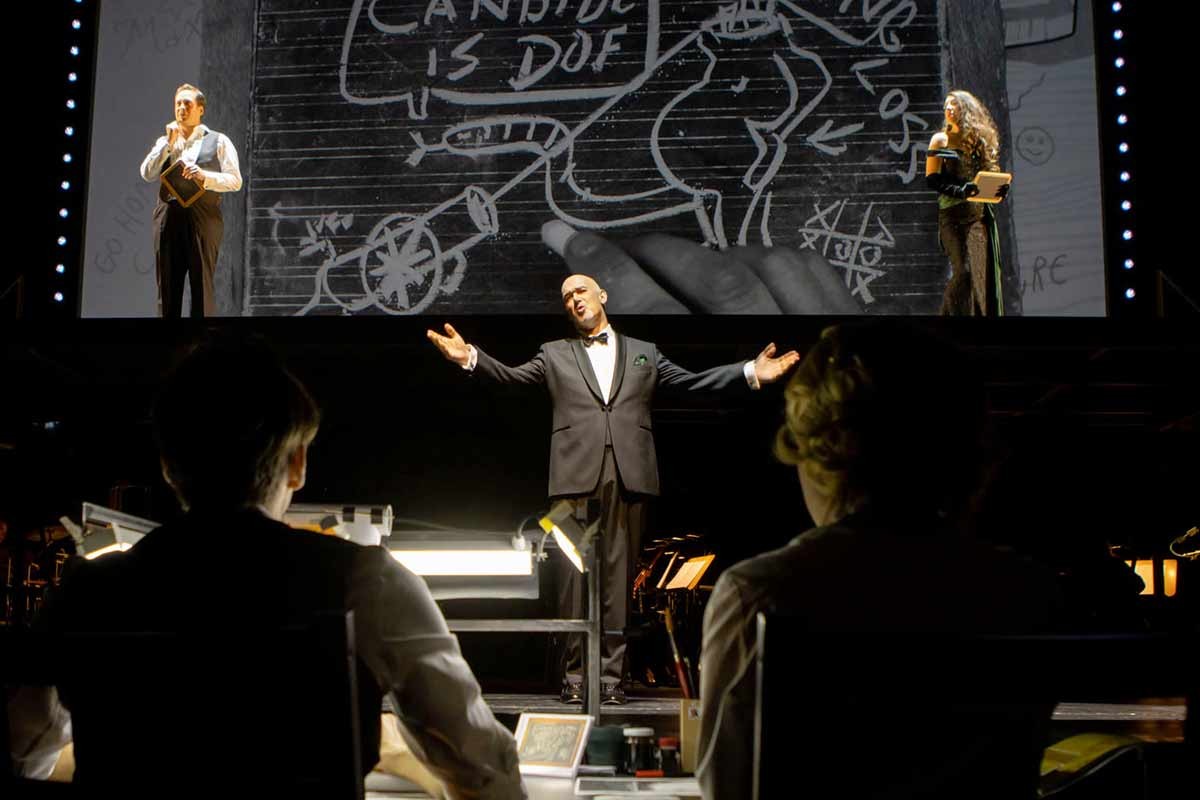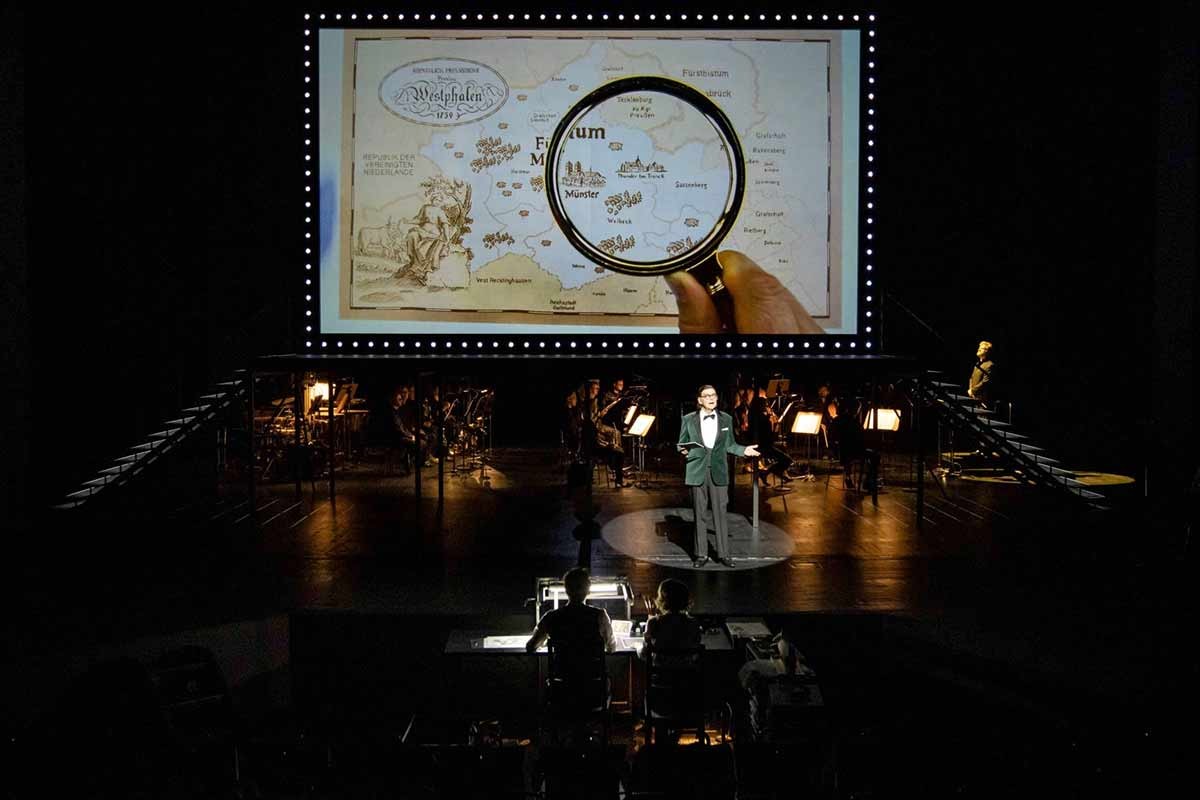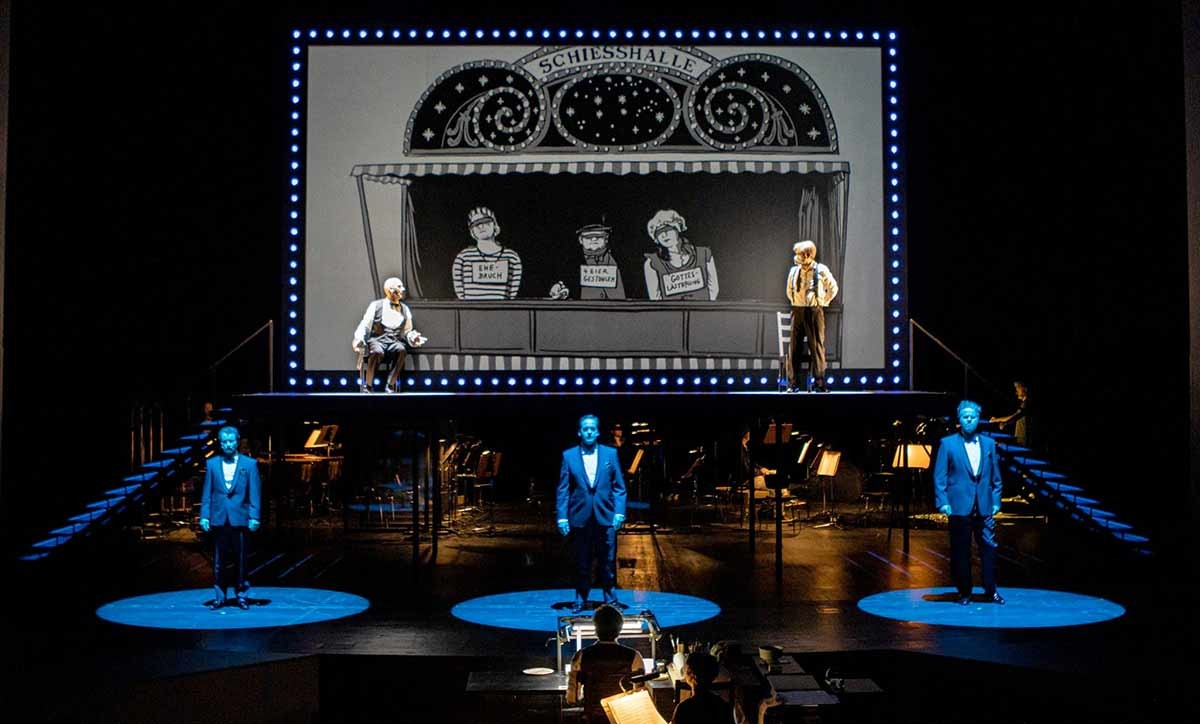DID YOU ALWAYS HAVE AN AFFINITY FOR THE STAGE AND THEATER?
Something always drew me to the stage. As a child, I performed something at every family party, no matter what: a little juggling, a song on the guitar or harmonica, an improvised dance. Certainly not particularly virtuoso, but always with full fervor and a flair for entertainment.
As a teenager I played in bands and in the gospel choir, and sometimes as a street musician. At our flat-sharing parties we always set up a small stage so that friends and anyone who felt like it could perform something. Even today, we regularly do small show and performance evenings in our house-share, where my two daughters are also passionately involved.
HOW DID YOU GET TOGETHER WITH THE "TRIO GRÖSSENWAHN"? --- ARE THEY REALLY MEGALOMANIACS? ;-)
There was supposed to be an exhibition for my second book "Jazz in the New York of the Wild Twenties". On the occasion of the vernissage I asked my good friend and excellent singer Lotta Stein if she knew some musicians who would like to play some music for the vernissage. And so Christoph Kopp (bass) and Christian Manchen (piano) joined me, and together they formed the trio. I read some passages from the book, and together it resulted in a jazz reading with live music. That was in 2007, and we really got around with it and had engagements here and there: cruise ship, literature festival, jazz mile, paddle steamer ...
But when I was working on my new book "Es wird Nacht im Berlin der Wilden Zwanziger" and it became clear that we wanted to do a program about it again, I knew that we had to approach it differently this time. Above all, I didn't want to read out loud anymore! (laughs)
And as far as delusions of grandeur are concerned, of the four of us, I probably have the most daring visions. (laughs)
WERE THERE ANY ROLE MODELS AS AN ARTIST - AND WAS THE ENTIRE SHOW CONCEPT ORIGINALLY CONCEIVED BY YOU?
I admire many artists, especially those who think outside the box and keep trying new things.
For example, the draftsman Christoph Niemann, who breaks boundaries in an incredible way: once he ran the NY Marathon, drawing live and reporting on his exertions from the course in pictures and text. On the blog of the New York Times. Unbelievable.
Or my wife Lillie L'Arronge, who adopts a new drawing style for every new children's book she writes and illustrates.
We sort of invented the show concept out of necessity. I was in the middle of developing the Berlin book when I had a show date on a cruise ship thrown at me and the trio. Jazz was no longer an option. And there were still no Berlin texts that I could have read aloud. Only drawings. Nevertheless, we started rehearsing. It was terrible. And it was clear we needed help. This came from our stage-experienced friend Tobias Karsten on the one hand and from my wife on the other. Tobias gave me the seemingly simple tip: "Concentrate on what you can do really well." And my wife interpreted this as follows: "Okay, then you draw and illustrate the show. And you show texts only in written form. You don't speak a single word the whole time." I was gobsmacked at first. But then I got a camera and a projector and suddenly the ideas just flowed out of us. I write "us" because the individual numbers are always teamwork. Most of the numbers were developed in close collaboration with the trio. In the second step, the sharp eyes of Saskia Kunze, my co-worker, look over them again, then we present them to the critical eyes of my wife. If she likes the number, we know it's ready for the stage.
DO YOU KNOW STAGE FRIGHT LIKE AN ACTOR OR A MUSICIAN?
Yes, I love that. That tingle just before the performance.
ONE OF YOUR BIGGEST SUCCESSES IS THE BERLIN BOOK WITH THE STAGE SHOW "EIN RÄTSELHAFTER SCHIMMER" - HOW DID YOU TAP INTO THE ATMOSPHERE OF THIS CITY IN THIS ERA?
Berlin in the 1920s must have been a magical place. I traveled around Berlin a lot and went in search of clues for the book research. Even though most of it was destroyed during the war, you can still feel that time everywhere.
When I then sit in my studio and draw Berlin night scenes, I imagine being there.
IF BERLIN FASCINATES YOU SO MUCH, WHY DON'T YOU LIVE THERE?
I absolutely love being in Berlin. My sister lives there, my best friend lives there, and of course I have to go there every now and then for work. There is so much to discover. My favorite way is by bike.
But living there as a family? That would be too stressful for me.
SPEAKING OF THE IMAGINARY, WOULD YOU LIKE TO LIVE IN THE ROARING TWENTIES, WHERE AT LEAST THREE OF YOUR BOOKS ARE SET?
If I were sitting in the DeLorean from "Back to the Future," the late 1920s would certainly be my first wish destination. Once sitting in the packed Wintergarten of 1929 and admiring the legendary shows, or an appearance by the scandalous Anita Berber in the White Mouse.
But we know how things went politically after that. I'm glad I didn't have to experience that firsthand.
WHEN AND HOW DID YOU KNOW THAT DRAWING WOULD BECOME YOUR PROFESSION?
Quite late, actually. Before that I had tried out all sorts of things, studied law for a semester, applied to a physiotherapy school, thought about studying sports. And even during my design studies I was interested in sculpture, animation and photography. It wasn't until I got my diploma that I decided to focus on drawing.
I WAS FOND OF COMICS AS A CHILD - WHAT DID YOU LIKE TO DRAW MOST WHEN YOU WERE YOUNG?
I drew animals a lot. The more dangerous the better. And maps. A strange mixture, actually (laughs).
YOUR EARLY APPEARANCES WERE IN THE SMALL STAGE FLOOR, FOR EXAMPLE. WHY DID YOU OR YOUR "TRUPPE" MAKE THE LEAP TO THE BIG STAGES - e.g. THE THEATER MÜNSTER?
Perseverance and megalomania. But the really big stages are still waiting for us: Carnegie Hall, Broadway, Royal Albert Hall. I still see potential there (laughs).
HOW DID THE IDEA FOR CANDIDE COME ABOUT - DID THE THEATER APPROACH YOU?
We played our Enigmatic Shimmer in the big house of Theater Münster. It was sold out, the atmosphere was great, and the director seemed to like it. He called me shortly afterwards and asked if I could imagine illustrating an operetta live. I was very hesitant at first, because I suspected how much work would be involved. I also didn't think that it would be 12 months of preparation with over 700 drawings for my colleague Saskia and me.
DID YOU KNOW THE MATERIAL OR THE MUSIC? WHAT IS SPECIAL FOR YOU ABOUT THIS LEONARD-BERNSTEIN-OPUS?
I knew nothing, neither the novel nor the music. I had almost never heard an operetta before.
But that's also the wonderful thing about my job. You take on a project and have to immerse yourself in the subject. And you can get to know so many exciting things. In the meantime, I even listen to an opera with my girls at home. Two years ago, that would have been unthinkable.
The music of Candide has grown on us. Sometimes poignant, sometimes powerful, then tender, comic or original. Sometimes Broadway musical, sometimes Karmina Burana, sometimes Hollywood.
WHAT DOES IT TELL US ABOUT OUR PRESENT?
The novel dates from 1759, yet is highly topical. Crazy, isn't it? People have been asking themselves the same questions for centuries, it seems.
HOW MUCH OF YOUR DRAWING ACTIONS WERE YOU ALLOWED TO DEVELOP ON YOUR OWN - DID YOU HAVE ARTISTIC FREEDOM, SO TO SPEAK?
Oh yes, artistic freedom is infinitely important to me in all my projects. And right from the start I felt a great deal of trust from the Intendaten and the dramaturge/director Ronny Scholz.
WHAT CAN WE LOOK FORWARD TO NEXT?
Most recently, I was allowed to re-illustrate the novel "The Great Gatsby" by F. Scott Fitzgerald, in an unbeatably great book layout. I'm really looking forward to that. Let's see if we can develop a small matching event for the book's release (spring 2022, Coppenrath Verlag). I'm curious myself.
